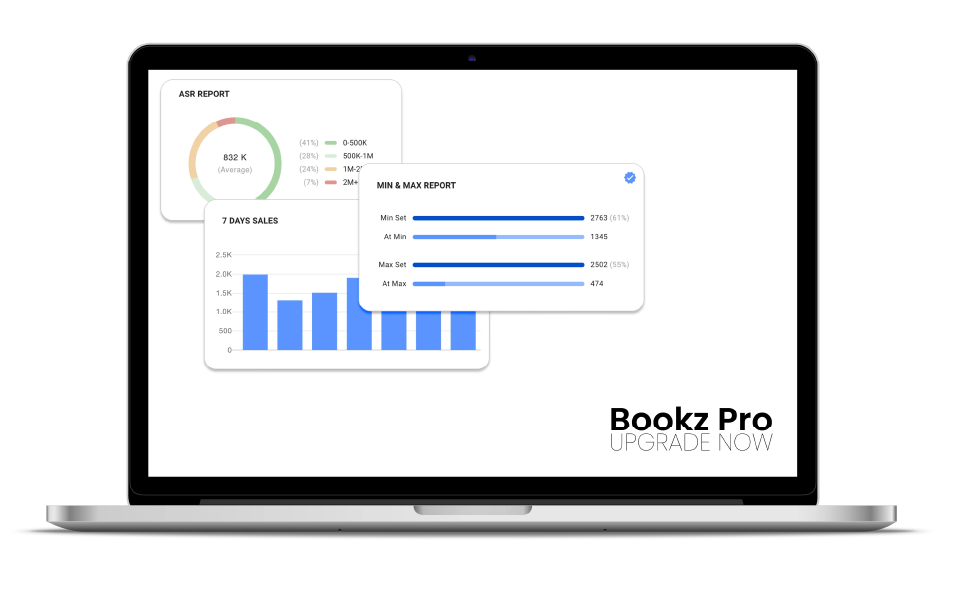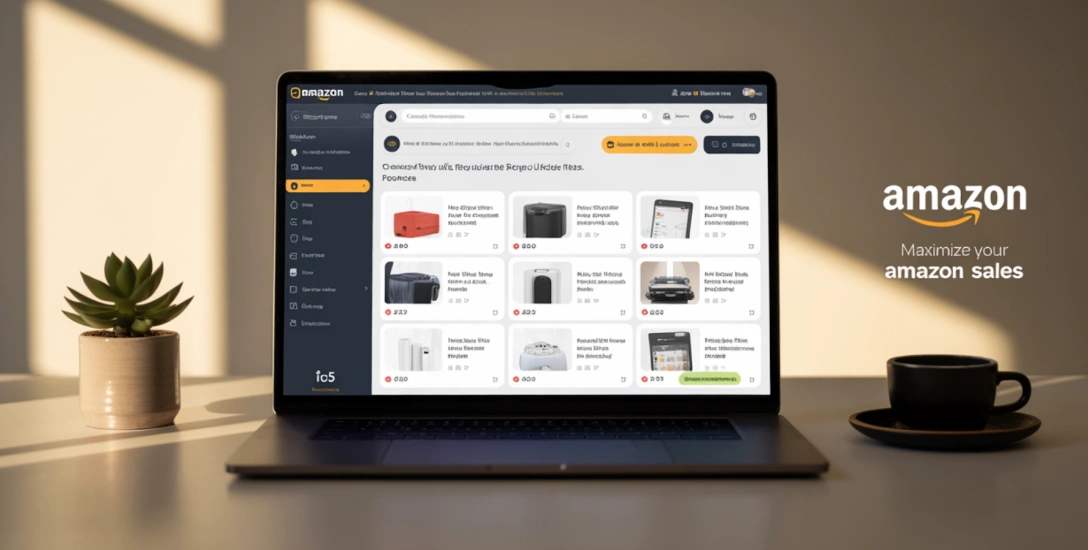Amazon Used Conditions: The Importance of Categories in Reducing Returns and Refunds

When shopping on Amazon, you’ll notice that some products are listed as either “new” or “used” condition. At a glance, shoppers can see the product’s condition, but expectations of what a “used” condition looks like can vary widely.
Does “used” mean torn pages, creased covers, and spine damage, or something gently handled and still in perfect shape?
That’s why sellers need to understand Amazon’s used condition categories and provide clear, accurate descriptions. Transparency builds trust with customers.
Understanding and following Amazon’s condition guidelines is critical. Failure to do so can result in account suspension or lost revenue.
What are Amazon Used Conditions?
Amazon offers four primary used condition categories—each with specific standards and expectations:
- Used—Like New or Open Box: The item is in perfect condition, but the packaging may be opened or damaged.
- Used – Very Good: The item shows minimal wear and may have minor cosmetic blemishes. All accessories are typically included.
- Used – Good: The item functions properly but shows signs of wear. Some parts or accessories may be missing.
- Used – Acceptable: The item is functional but has noticeable wear, including scratches, dents, or missing non-essential parts.
Understanding these categories ensures that you describe your item accurately and set the right expectations for buyers.
Why Accurate Condition Categorization Matters?
When selling used items on Amazon, assigning the right condition category isn’t just about following guidelines—it’s about setting the right expectations. Accurate condition categorization is critical in shaping buyer trust, reducing returns, and protecting your reputation as a seller.
1. Accurate Listings Build Buyer Trust
Buyers rely on condition labels to decide whether an item is worth their money. When a product arrives as described—especially in the “Used” category—it builds confidence and increases the chance of repeat purchases. Consistency between what’s promised and delivered tells buyers you’re a reliable seller who values transparency.
If you list a textbook as Used—Very Good and it arrives with only minor shelf wear and clean pages, the buyer will feel satisfied and validated in their choice. That positive experience builds trust and can lead to favorable reviews or repeat purchases.
All in One Software
for Book Sellers
Scout Better – List Faster – Reprice Smarter
Over 30% Business Growth
Achieved by Our Clients

2. Misrepresented Conditions Can Damage the Customer Experience
Overstating an item’s condition may help make a quick sale, but it often backfires. When buyers receive something worse than expected, they’re more likely to request a return, leave negative feedback, or even report the issue to Amazon. These actions can damage your seller rating, and repeated issues may lead to performance warnings or even account suspension.
When a seller lists a book with torn pages and writing in the margins as very good condition, the buyer, expecting a clean, gently used copy, feels misled. They file a return and leave a 1-star review, citing the poor condition. The negative review and return impact the seller’s rating and may also reduce their chances of winning the Buy Box.
3. Reducing Returns and Refunds
Returns and refunds are common pain points for sellers on Amazon, especially when dealing with used items. While some returns are unavoidable, many stem from a straightforward issue: mismatched expectations due to inaccurate condition labeling.
Even if the item works, the perceived discrepancy between the description and reality often results in a return request, or worse, negative feedback.
Insights on Condition-Related Returns
While Amazon doesn’t publicly share specific return data by condition category, many sellers report that many of their returns come from over-graded listings. For example, sellers in online forums and communities often note that downgrading from “Very Good” to “Good” (even when borderline) has noticeably reduced their return rates.
Anecdotally, one bookseller found that returns dropped by nearly 30% after they began strictly reserving “Very Good” for only the cleanest inventory and reclassifying others as “Good” or “Acceptable”—even if it meant slightly lower pricing.
Preventing Misunderstandings Through Accurate Grading
Proper categorization sets the right expectations from the start. When buyers get precisely what they were promised—or better—they’re less likely to return the item or leave negative feedback.
Here’s how correct grading helps:
- It creates transparency. Buyers know what they’re getting before it arrives.
- It builds credibility. Honest listings show that you’re not trying to oversell.
- It avoids surprises. A slightly under-promised but over-delivered product can create a positive experience.
Pro tip: When in doubt, round down the condition. It’s better to surprise a buyer than disappoint them pleasantly.
Accurate condition categorization doesn’t just benefit buyers—it protects your business by reducing avoidable returns, minimizing refund losses, and maintaining your Amazon performance metrics.
Tips for Sellers: Listing Used Items Accurately

1. Inspect and Grade Items Effectively
Take the time to thoroughly inspect each item before listing. Look for signs of wear such as:
- Scratches, dents, or scuffs
- Missing pages or torn covers (for books)
- Faded or damaged labels
- Missing accessories or manuals
Compare what you see with Amazon’s official condition guidelines. Be honest—grade something more conservatively if it could be considered borderline between two categories. Buyers appreciate transparency, and under-promising while over-delivering leads to better feedback.
2. Include Detailed Condition Notes and Photos
While condition categories provide a baseline, your condition notes offer the details buyers need to make a confident decision. Include specifics such as:
- “Slight crease on front cover, no writing or highlighting inside”
- “All accessories included; tested and works perfectly.”
- “Stickers on back cover, pages are clean and intact.”
If you’re using a listing tool or marketplace that allows photos, include high-quality images of any flaws. Providing visual proof of the item’s condition helps set clear expectations and reduces the likelihood of returns.
3. Use Consistent Language Across Listings
Create a few go-to phrases or templates for each condition level to stay consistent and efficient. Consistency helps build credibility and makes it easier to manage large inventories.
Example phrases:
- Very Good: “Minor shelf wear. All pages intact and clean.”
- Good: “Moderate wear on cover. Some notes or highlighting are possible.”
- Acceptable: “Heavy wear. May include writing, stickers, or damage to cover.”
This approach not only saves time but also gives buyers confidence in your reliability as a seller.
4. Follow Guidelines to Protect Your Account
Using Amazon’s condition categories correctly isn’t just about accuracy—it’s also a policy requirement. Frequent complaints or returns due to misleading descriptions can negatively impact your:
- Seller rating
- Order defect rate
- Buy Box eligibility
- And even your account standing
Following the official condition guidelines helps you stay compliant and keeps your business in good health.
By taking the time to inspect thoroughly, write clear descriptions, and stay consistent, you’ll build buyer trust and reduce the headaches of returns or negative feedback. It’s a simple habit that pays off in the long run.
Accurate Grading and Listing with Bookz Pro!

Amazon Book Reselling Blueprint
Read now, explore our full guide. Your revolution starts here. Subscribe to get the blueprint!
Tired of second-guessing your grading and listings? Bookz Pro makes it easy for Amazon book sellers to stay consistent and accurate. With smart condition tagging, bulk listing tools, and consistent note templates, you’ll save time, reduce errors, and boost buyer trust.
Whether you’re listing hundreds of books or just starting, Bookz Pro gives you the structure and confidence to grow, without the guesswork.
Sign up for a free 14-day trial and get a FREE blueprint packed with proven strategies to level up your bookselling business.
Conclusion
Accurately categorizing the Amazon used condition of items is essential for building trust, minimizing returns, and maintaining a healthy seller account. By closely following Amazon’s condition guidelines, sellers can set clear expectations, avoid misunderstandings, and create a better experience for buyers. Remember, clear and honest listings not only protect your reputation, they also lead to smoother transactions and stronger long-term success.
Frequently Asked Questions
Tools like Bookz Pro offer bulk listing, condition tagging, and consistency checks to ensure accurate categorization.
“Good” means the item shows moderate wear but functions properly and includes all essential parts or content.
Used books are categorized as Like New, Very Good, Good, or Acceptable based on cover wear, page markings, binding, and completeness.
Returns are accepted if the item is defective, misrepresented, or not as described in the condition listing.
Yes. Accurate categorization reduces returns and increases buyer satisfaction, leading to better ratings.



